Our editors independently select these products. Making a purchase through our links may earn Well+Good a commission
Grab the Popcorn and Binge These 10 Queer-Positive Films From the ’80s and ’90s That Still Land
Many groundbreaking New Queer Cinema fimls from the '80s and '90s films have fallen to the background. Here are 10 to add to your must-watch list.
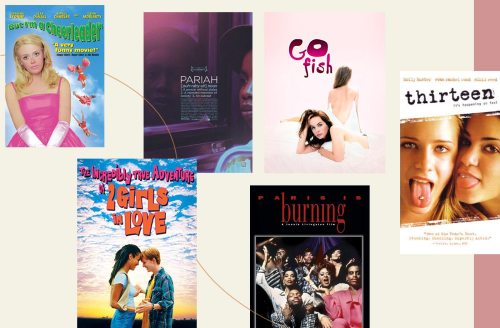
Movies like Booksmart, Love, Simon, and Brokeback Mountain are lauded for their nuanced exploration of queer love and life. But for queer-positive films that are what Karen Tongson, PhD, professor of gender and sexuality studies at the University of Southern California calls, “tremendous specimens of craft” and “documented glimmers of hope,” you’d be wise to look back to movies from 1980s and 1990s that fall under the genre of New Queer Cinema.
Experts in This Article
Karen Tongson, PhD, is a professor of gender and sexuality studies at the University of Southern California. She is that author of Relocations: Queer Suburban Imaginaries, Why Karen Carpenter Matters, co-editor of Postmillennial Pop, and co-host of the “Waiting to X-Hale” podcast.
Film critic B. Ruby Rich coined the term New Queer Cinema (NQC) in 1992 Village Voice article to describe films that are “intensely political and aesthetically innovative, and made possible by the debut of the camcorder, and driven initially by outrage over the unchecked spread of AIDS,” Rich writes in her book New Queer Cinema: The Director’s Cut. NQC films were in development during the AIDs epidemic, when LGBTQ+ folks were receiving messaging day-after-day, death-after-death that their lives did not matter. “There was a national effort to repress queer representation and leave the way that AIDs was ravaging the queer community offscreen,” Dr. Tongson says.
“The release of these films marked a moment of tremendous possibility. It felt like we were on the precipice of something.” —professor of gender and sexuality studies Karen Tongson, PhD
But amid that landscape were people in the margins of the film industry working to present a range of queer-positive stories inclusive of political commentary and comedic entertainment. “The release of these films marked a moment of tremendous possibility. It felt like we were on the precipice of something,” says Dr. Tongson.
While it’s great that queer-positive storylines are now common and central to mainstream blockbuster hits, many NQC films have been all but forgotten—and that’s not acceptable. They need to be remembered, and not just during the designated pride month of June. “For queer people, these movies are a documentation of an important moment of queer history,” says Dr. Tongson, whos adds that for non-queer people, “they are a fun sexy, thoughtful, cinematic look at a world you might not otherwise have access to.”
While the following list of NQC movies is far from complete—as Dr. Tongson says, “in the ’90s, it felt like every night I was going to see a new queer indie film”—it’s a glorious start.
7 New Queer Cinema films from the ’80s and ’90s that are still worth watching today
1. Tongues Untied (1989)
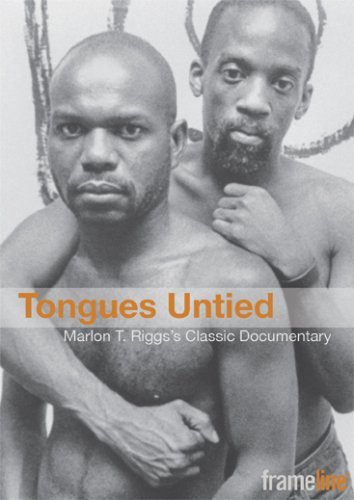
Attention, poets and poetry lovers: Watch this experimental film ASAP. Director Marlon Riggs combines poetry—written by esteemed Black gay poets including Riggs, Essex Hemphill, Brian Freeman, and more—with harrowing, haunting shots that confront the issues homophobia and racism in America.
Rent on Vimeo, $3.
2. Paris Is Burning (1990)

If you’re a fan of Pose or Legendary, Paris Is Burning is a must-watch. Offering a look at the underground drag ballroom scene in Harlem in the 1980s, Paris Is Burning follows a handful of drag queens and kings, exploring themes of power, privilege, and gender.
Directed by (white) filmographer Jennie Livingston, however, Paris Is Burning is as celebrated as it is critiqued for several reasons. Many question whether Livingston exploited the people she filmed, whether she owed them more than just air time (for instance money) and what responsibility she had to articulate the violence her subjects—many of whom are Black and Latinx transwomxn—experience(d) daily.
With those valid questions in mind my recommendation is to watch the film twice—once for enjoyment and then with a more critical eye. Then, read The Subversive Edge: Paris Is Burning, Social Critique, and The Limits of Subjective Agency, by Phillips Brian Harper and Is Paris Burning?, by Black feminist bell hooks.
Rent or buy on iTunes, $4, $15.
3. The Living End (1992)

To really appreciate this funny, sexy, and controversial flick featuring two HIV-positive gay men on the run, you need to first understand this: There was no effective standardized HIV-care plan (aka antiretroviral therapy) in place when it was premiered in 1992. The Living Ends shifts in tone between fear of death and nihilistic freedom as the main characters discuss their fate, fall in love, and have sex. It’s passionate. It’s angry. It’s political. It’s desperate. It’s genius.
Rent or buy on Amazon $3, $10.
4. Go Fish (1994)

Though mainstream audiences may know Guinevere Turner best for her role in American Psycho, she’s famed among queer communities for her role as Max West Go Fish. The New Queer Cinema Film follows college-aged Max as she unpacks and eventually acts on her attraction for Ely. Far more than just a cutesy love story, Go Fish offers interesting commentary on butch/femme dynamics, lesbians who sleep with men, sexual freedom, and more.
Pro tip: Watch on through the credits for behind-the-scenes snippets that include hot make-out scenes.
Rent or buy on Amazon, $4, $10.
5. The Incredibly True Adventures of Two Girls In Love (1995)
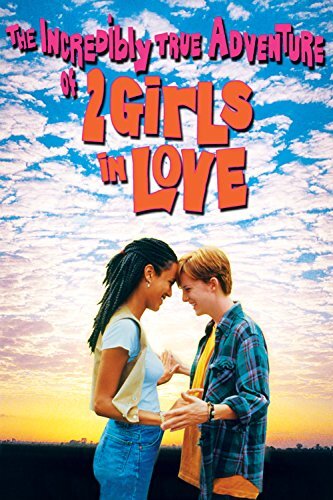
The Incredibly True Adventures of Two Girls In Love is a queer-twist on the classic romantic comedy genre. In this 1995 film, Randy, who lives with her lesbian aunts in a downtrodden area, falls in love with and Evie, a popular rich Black girl. And guess what? Eventually, Evie loves her back.
What follows is an endearing portrayal of teenage love with commentary on race, class, homophobia, peer pressure, and gender stereotypes weaved in throughout.
Watch for free on Youtube.
6. The Watermelon Woman (1996)

The Watermelon Woman follows aspiring filmmaker and video-store employee Cheryl Dunye as she uncovers the history of a Black actress from the 1930s known as the Watermelon Woman. As Cheryl archives this actress’s career, the viewer is led to wonder: How is history recorded? Who does history prioritize and who does it leave out?
Around when Cheryl learns that the Watermelon Woman had a white lesbian lover, she, herself, gets romantically involved with a white woman, Diane, played by Guinevere Turner. The overarching question of the film? Does life imitate art or does art imitate life?
Watch for free on Amazon.
7. But I’m a Cheerleader (1999)

It’s campy, it’s cheesy, and it’s a New Queer Cinema classic. Directed by Jamie Babbit, the 1999 film But I’m A Cheerleader uses stereotypes and satire to force viewers to laugh at and think about the true toxicity of conversion camps, homophobia, and gendered stereotypes.
It follows high-school cheerleader Megan, who is forcibly sent to a gay conversion camp because her friends and family are convinced she’s gay. (Spoiler alert: she is). While at camp, Megan falls for Graham, a rough-around-the-edges smoker, and she spends the rest of the film fighting for her and against the camp itself.
Watch for free on YouTube.
Bonus: 3 queer films that aren’t necessarily New Queer Cinema, but are still A+
1. Desert Hearts (1985)

Prolific lesbian novelist Jane Rule (1931-2007) was a gay rights activist, editor, and writer who entered the spotlight in 1964 with the release of her novel Desert of The Heart. It follows two women who fall in love, and was among the first books to feature a lesbian relationship, which helped to allow a whole generation of queer women to feel seen.
The 1985 film adaptation Desert Hearts may pales in comparison to the book, but if a simple tale of lesbian love is what you’re after, that’s just what you’ll get.
Rent or buy on Amazon, $4, $15.
2. Thirteen (2003)
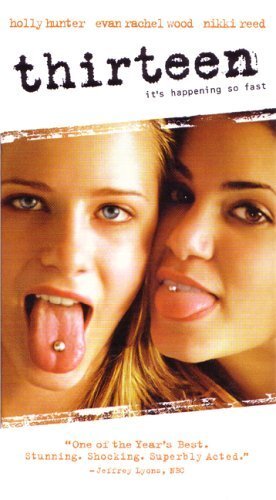
Candidly, I have a soft spot for this intense coming-of-age drama, having watched it for the first time soon after having my first kiss with another woman. At its most basic, Thirteen is about the “nice” girl (Evan Rachel Wood) falling for a “bad” girl (Nikki Reed). Drugs, pregnancy scares, tongue piercings, pretty crime, and questions of consent follow.
Thirteen is also an intimate meditation on the close friendships that can blossom between teenage girls, and a look at the complex and complicated landscape of teenage emotions.
Rent or buy on Amazon $4, $10.
3. Pariah (2011)
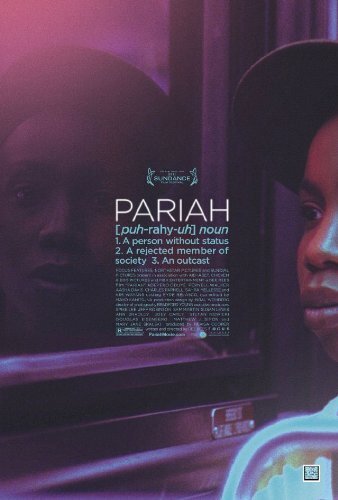
Poetry? Strap-ons? Strippers? Check, check, and check. Furthermore, though, Pariah’s main character poses questions like, what does virginity mean when you’re not straight? What does it look like to be gay and Black? How do you come out to homophobic parents? And more.
While Pariah didn’t come out until 2011, it’s one of the best (and only) coming-of-age films that centers queerness and Blackness. This semi-autobiographical film by director Dee Rees will be a fave among anyone who enjoyed Booksmart, The Half of It, or Akeelah and the Bee.
Rent or buy it on Amazon, $4, $15.
Sign Up for Our Daily Newsletter
Get all the latest in wellness, trends, food, fitness, beauty, and more delivered right to your inbox.
Got it, you've been added to our email list.









